I’ll never forget the first time Tom made his own jammy toast. Okay, so there was more jam on the kitchen worktop than the toast, but the pride I could see on his face made the cleaning up instantly forgettable.
And the ‘nomination for the life skill that has made the most positive difference to my life to date‘ goes to …. drum roll, please …. Tom making his own hot chocolate on school mornings! I gain a few precious moments to enjoy my breakfast cuppa whilst it’s still relatively hot!
It’s sad but true that man (or boy) cannot live on jammy toast and hot chocolate alone. However, learning to make simple meals, a favourite hot drink or snack is a great starting point for developing independent life skills for older children or young adults with autism.
Visual supports and guides make teaching these vital life skills so much easier and our TomTag Food and Drink Basics sticker pack is designed specifically to help with this task.
Here’s some of the ways we’d suggest for using this pack:
- Step-by-step sequencing instructions for making breakfast, snacks, simple lunches or hot drinks.
- List the food choices available to your child for breakfast, lunch and snacks.
- List each family member’s food preference as a reminder to those preparing the food.
Whichever way you choose, here’s a few simple tips to follow.
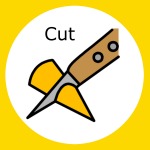 Choosing the right tasks
Choosing the right tasks
Choose tasks that are appropriate to your child’s developmental level. Starter tasks might include washing fruit, cutting soft vegetables with plastic knives or spreading butter on toast (and work surfaces!).
Move on later to more complex tasks requiring greater motor skills, concentration and focus such as using a peeler, chopping with sharper knives or boiling a kettle.
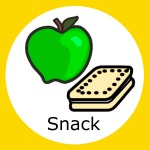 Talking points, an opportunity for learning
Talking points, an opportunity for learning
Having children help make simple meals in the kitchen provides a natural opportunity for learning on a range of topics.
Teaching children to wash their hands and kitchen surfaces before preparing food or showing them safe ways to use knives helps them to understand the importance of kitchen safety and hygiene.
Practice reading and maths skills by comparing packet labels and counting or measuring out ingredients.
Talk about the effects our choice of food has on our health and lifestyle. Try out the NHS Change4Life Sugar Swaps app for a fun way to find out how much sugar is in our food and drinks.
 A recipe for foodie fun
A recipe for foodie fun
Research shows that repeated exposure to food increases a child’s willingness to eat. On average, children might need over a dozen exposures to a food before ever putting it in their mouth, even more for a child with sensory issues around food.
Cooking meals therefore provides low pressure, fun, sensory experiences. If children associate food with enjoyable experiences, they’re more likely to be receptive to trying new foods and eating healthily. Involving children in meal choices and preparation of simple meals can help to improve their eating habits and establish a healthy relationship with food.
Cookie cutters are brilliant for turning boring sandwiches into enticing nibbles. A selection of different coloured fruits or vegetables look great laid out to make a rainbow.
This play-dough cafe we set up when Tom was younger was a really fun way to engage him with the experience of food preparation. Tom plays the role of both chef and waiter, helping to develop his communication and social skills too.
Listen out for my most favourite comment of all from Tomas at the end “Please mummy, can we make our own food?”!
 Praise, encouragement and letting go of the mess stress!
Praise, encouragement and letting go of the mess stress!
Be sure to give compliments, praise and lots of encouragement to your child to keep building on their skills. Let them be the first to taste what they’ve made and ask for suggestions of what they’d like to try next.
Having kids help out often means a bit more mess to clear up afterwards. Try to be patient and allow for a little extra mess whilst they’re still learning.
Resources for simple meals
Get free visual recipe sheets for tasty treats and snacks from The Autism helper.
Cheeriosmilkandspoon is Sarah’s personal blog account of parenting a child with food aversions and eating challenges.

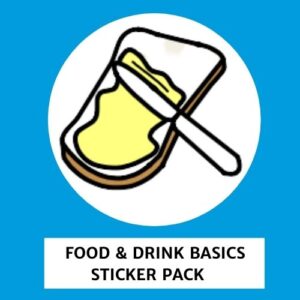
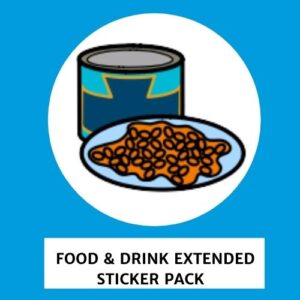
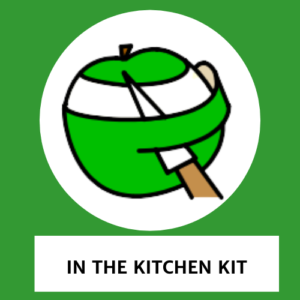

[…] already looked at preparing some non-cook simple meals for breakfast, snacks and lunches in our Life Skill series November blog using symbols from our Food & Drink Basics […]
[…] looked at preparing some non-cook simple meals for breakfast, snacks and lunches in our Life Skill series November blog using symbols from our Food & Drink Basics […]
[…] To find out more about using visual prompts like TomTag to help your child build confidence and develop their cooking skills, follow the link to our next blog TomTag Life Skills – Simple Meals. […]